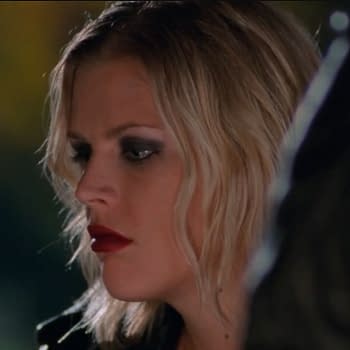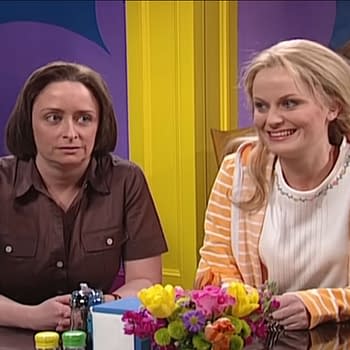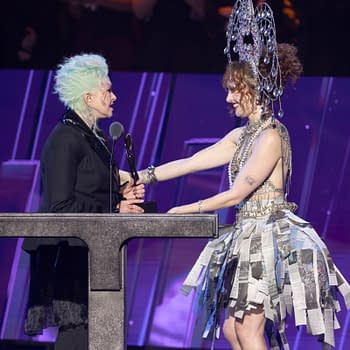Posted in: Netflix, TV | Tagged: Allan Scott, Anya Taylor-Joy, Arissa Blasingame, bleeding cool, cable, Chicken Bone VFX, effects, interview, John Mangia, netflix, scott frank, streaming, television, The Queen's Gambit, tv, vfx
The Queen's Gambit: Chicken Bone VFX on Bringing Chess to the Screen
One of the most fascinating and inspirational television shows of 2020 was the Netflix drama series The Queen's Gambit. The show centers on orphan-turned-chess prodigy Beth Harmon, played by Anya Taylor-Joy, who while developing a passion for the game, also struggles to come to terms with her upbringing to find her own voice in life balancing fame and adversity on her way to becoming the best. On top of Taylor-Joy's performance and a wonderful supporting cast, the technical marvel of bringing creator Scott Frank and Allan Scott's cerebral series to the screen is Chicken Bone VFX. I spoke with Head of Production Arissa Blasingame and VFX Supervisor John Mangia on how Beth's visions and her world became reality.
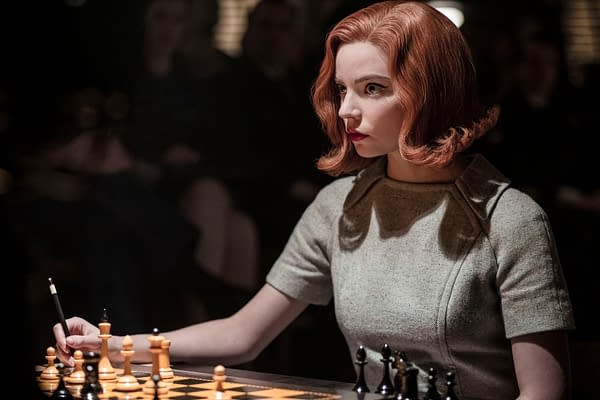
"When we were approached, we had a meeting with Scott Frank and post-producer Mick Aniceto and we talked over the idea of the chess pieces," Blasingame said. "We were given the script for episode one. We knew a little bit on how they were supposed to appear to Beth in this world and what their purpose was for her in the orphanage, but they weren't clear direction on what they're supposed to look like or how they're going to appear or move throughout all the episodes. So there was a little bit of both. We did some conceptualizing to present to Scott to show him where we thought the chess pieces are going. It resonated with him so that's how we got attached to the show. We were then supplied with some storyboards pretty quickly for pacing and timing purposes. It was really a collaborative effort from the beginning all the way to the end. We would hear what Scott was thinking and take that and put it into a visual. He would see that and put it into a visual. It was a back-and-forth volley through most of the show. It's probably the most creative piece we batted around the most."
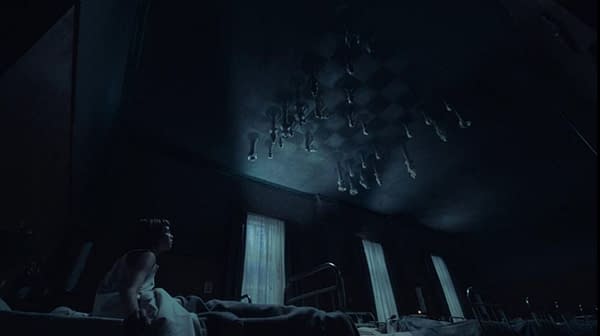
"We spent a lot of time developing the look of the chess pieces to fit Scott's vision and there's a lot of collaboration with the chess advisors on how the games would play out making sure all the moves were accurate," Mangia added. "It was very collaborative. We developed the chess pieces as sketches at first trying to figure out what the shape would be. We eventually landed on a shape that's similar to the design of the chess pieces Beth plays with as a child at the orphanage. We honed on this sort of there, not there; volumetric and sort of solid kind of vibe. We played around with how they would catch light in a very dimly lit room. There's a lot that went into it. There's also a lot of collaboration with the show's cinematographer Steven Meizler on where would the chess pieces be in the room with how the camera movements and framing with what was going to be added later in visual effects. There was a lot of planning and collaboration especially during shooting."
CBFX "The Queen's Gambit" Reel from Chicken Bone FX on Vimeo.
In the series, Beth's chess visions on the ceiling were upside down so she could play out the games in her head with the assistance of tranquilizing pills. Throughout the film, she grew dependent on drugs and alcohol as a coping mechanism and emotional crutch. Both said with the ambitious nature of the series, presenting period-accurate locations from New York, Mexico City, and Russia presented its own set of challenges on top of what they were already tasked with. "The fact the main character travels to so many of these different places in the world whereas, in most shows, you're only in one place," Mangia said. "In a period show, maybe you're in New York in the 1920s. In our show, we had so many different places to keep tabs on and make sure that we were presenting those places as accurately as possible."
Blasingame and Mangia describe the chess sequence in Beth's head as a progression to show the audience how she grows as a player throughout the series. "It was something that was worked on the show throughout the series," Blasingame said. "Originally, it was used to show the passage of time to show her as a novice as her progression gets to become a grandmaster. It was important to break it down to small pieces for the audience to follow along. It became a tool for Beth to follow to replay games. It evolved as a story tool. It took awhile to get to the final." She also added they were privy to the score that helps set the mood throughout the series as they developed the sequences.

"The greatest takeaway I had was the opportunity to work with so many creative and talented people," Mangia said. "At the same time, develop something as original and unique as this as there's no reference for something like this." The Queen's Gambit is available to stream on Netflix.







